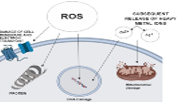Abstract
Anti-microbial resistance (AMR) is the ability of a microbe to resist the effect of antibiotics. It has become the most important cause of concern throughout the world. AMR may develop a variety of mechanisms, including resistance, weakness, or due to a certain therapeutic failure. The three major causes of resistance were identified to be over usage of anti-microbials, over-prescription, increased agricultural usage. The mechanism which leads to the development of AMR was found to be Metabolic Inactive Persister cells biofilm formation, Swarming, Obligate intracellular microbes, Reduced uptake and efflux pumps, Modification of the antibiotic binding site, Production of competitive inhibitors. Research is still being carried out and few methods successfully delay or inhibit the progress of Resistance namely Photodynamic therapy, which works on the principle of photosensitization, results in formation of ROS which destroys pathogenic cells, Vaccines, which strengthen the defence system to fight against foreign microorganisms efficiently, Antibiotic adjuvants, work by inhibiting any kind of mechanism related to the resistance increasing the drug’s antibacterial efficiency, Nano antibiotics which acts by interfering with the mechanisms for the development of the resistance and microfluidics give a better understanding of the bacteria and its superior antimicrobial susceptibility testing. Hence, in this review, the above mechanisms of antimicrobial resistance as well, the latest AMR combating strategies are discussed.
Full text article
Authors

This work is licensed under a Creative Commons Attribution-NonCommercial-NoDerivatives 4.0 International License.

